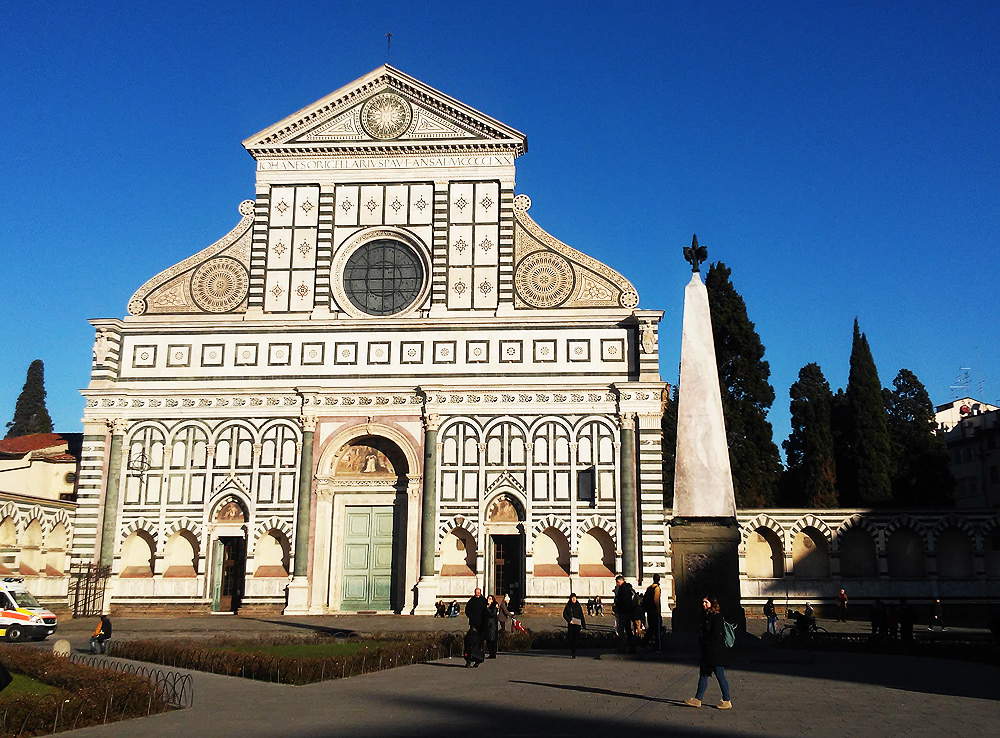Could Salvini introduce a ticket fee to visit Italian churches?
It may sound like a paradox to some, but it is well known that the Ministry of the Interior manages a vast cultural heritage, one of the most valuable in the world: it is the patrimony of the Fondo Edifici di Culto (FEC), an entity that holds ownership of more than eight hundred churches throughout Italy. Important churches such as Santa Croce and Santa Maria Novella in Florence (in addition to their monumental complexes), Santa Maria in Aracoeli, Santa Maria del Popolo, Sant’Ignazio, Santa Maria sopra Minerva, and Santa Maria della Vittoria in Rome, as well as the Gesù church in Palermo, the basilica of San Domenico in Bologna, San Domenico Maggiore, Santa Chiara, and San Gregorio Armeno in Naples, are part of the FEC. And also owned by the FEC are all the goods kept in the churches it owns: to wit, they range from Giotto to Michelangelo, from Bernini to Caravaggio, from Annibale Carracci to Guido Reni, just to name a few. Put in rather brutal and certainly not very poetic terms, when one enters Santa Maria della Vittoria and admires Bernini’sEcstasy of Saint Theresa, one is admiring an asset owned by the Italian state, and in this case by a Fund that depends on the Ministry of the Interior. An asset that, like all the others that are part of the FEC, was confiscated by the state shortly after the Unification of Italy: first the Kingdom of Sardinia in 1855, and then the Kingdom of Italy in 1866, promulgated some laws (the Rattazzi law in the first case, the so-called subversive laws in the second) by which the religious orders were suppressed and their property confiscated, which flowed into a Fondo di Culto that administered them and guaranteed an annual allotment to the religious. The Fund of Worship became the current FEC in 1985, when the state stipulated that the sustenance of the religious was the responsibility of the Church: however, the purpose of preserving the movable and immovable property that the Fund secured in the mid-19th century remained unchanged.
Today, the Ministry of the Interior manages this immense patrimony in two ways: either by entrusting the management (with all that this entails, from finding the resources for their operation to taking charge of the charges for ordinary and extraordinary maintenance) to third parties, as is the case with the basilica of Santa Croce which is managed by the Opera di Santa Croce, or by taking care of it directly. In fact, the FEC has its own budget, separate from that of the Ministry, and is administered by a Central Directorate framed within the Department for Civil Liberties and Immigration and working in concert with the Ministry of Cultural Heritage and the Ministry of Infrastructure for everything related to technical aspects: conservation, restoration, enhancement, and promotion. In the 2016 final balance, the FEC recorded expenditures of about 18 million euros, 6 of which were for restorations: this is a derisory figure, certainly lower than the real needs (the FEC administration, in a memorandum sent in 2017 to the Court of Auditors, estimated in 15 million euros the expenditure for priority interventions for that year). Not to mention that valorization and promotion are practically nonexistent: in recent times, only an exhibition on Caravaggio is remembered in 2017.
 |
| Florence, the Basilica of Santa Maria Novella. Ph. Credit Finestre Sull’Arte |
The current Minister of the Interior, Matteo Salvini, just a few hours ago remembered that such a vast art-historical heritage depends on his ministry and, in a Facebook Live on Nov. 1, mentioned the problem of the shortage of resources with which the FEC is dealing. “One thing you certainly do not know,” Salvini said, “is that the Ministry of the Interior manages eight hundred churches in Italy, the Fondo Edifici di Culto. We own and are responsible for what happens in eight hundred churches that today are open for celebrations, for services, for masses, and yet it is a problem because for ordinary and extraordinary maintenance we have yes or no 6 million euros a year and there are only two churches that have an entrance fee, because there are incredible works of art, from Caravaggio to statues by Bernini, and we also need to think about how to better manage this heritage.” For now, no direct mention of the systematic establishment of a ticket for access to churches that belong to the FEC, but the mention of the two that now apply it (the two Florentine basilicas) could hint that the Viminale’s desire is to extend the practice ofentrance fees to other houses of worship as well.
 |
| Matthew Salvini |
Fee-based entry to churches is probably one of the most debated issues by those concerned with cultural heritage. The reasons for and against the introduction of an entrance fee in a church (we are talking, of course, about monumental churches, those that, for the vastness and quality of their heritage, have nothing to envy to many museums) have been well analyzed by Fabio Franceschi, a researcher of Canon and Ecclesiastical Law at the Sapienza University of Rome, in his 2014 essay. To summarize: the church is first and foremost a liturgical good, a place intended for worship, but it is also a cultural good, and from this derives a dual fruition, which must be guaranteed and respected in all its meanings. The ways through which church management bodies try to harmoniously reconcile both cultic and cultural fruition are different: there are churches in which one enters only by paying the price of a ticket and where those who want to go to pray have set times when they can do so; there are other churches where paid access concerns only certain portions of the building (for example, a chapel of particular value, as happens in San Francesco in Arezzo) or separate bodies (as at the Cathedral of Florence where one enters free of charge but pays to access the Bell Tower); and still there are churches where access is charged only for certain periods of the year, or only for groups. And even for ticketing, the formulas are different: there are single tickets, there are organizations that bring together several churches and sell cumulative tickets (this is the case of the monumental churches in Verona), while in Venice some churches (such as the Basilica dei Frari or that of Saints John and Paul), in addition to the traditional access tickets, also sell tickets with an enclosed guide to the building by paying a small surcharge.
For the idea of establishing ticketing in FEC-dependent churches, the now “classic” reasons for debate apply. If it is true that ticketing could guarantee more income to be reinvested in the maintenance of the buildings as well as in their enhancement (which could perhaps also involve hiring staff to study them, or illustrate them to the public, or even guarantee them extended opening hours), it is also true that the introduction of a ticket would greatly affect the liturgical function of the churches, severely limiting it (suffice it to think that, in churches where one pays, the faithful obviously cannot enter when and how they like: He has to present himself to an attendant, specify the reasons for his presence in the building, and often remain in an area reserved for worship, without the possibility of access to the parts of the church where visitors who enter for quite different reasons go instead). And do not underestimate the fact that this practice is considered particularly odious, with the result that the ticket contributes to alienating many Catholics (who prefer to pray elsewhere: the primary function of the benefice is thus lost) and also several tourists, who are often moved by questions of principle not to visit a church for a fee.
It is undeniable that the benefits of introducing a ticket would be important. At the same time, however, it would be rather traumatic to decide to extend an entrance fee to the entire heritage of the FEC: the city of Rome alone, for example, would find itself, from one day to the next, with all its most important churches precluded from free access (and it is good to remember that it is not only tourists who visit the churches of cities of art, nor even the faithful who would be confined to circumscribed areas or obliged to pray at set times: there are also many citizens, students and workers, who during a work break or a walk enter even for a few minutes to review the vault of St. Ignatius or the Cerasi Chapel). And so perhaps it would be more sensible to find alternative forms of funding: setting up bookshops (there are in many churches), encouraging voluntary offerings, establishing paid guided tours, selling audio guides. Or, if ticketing is really necessary, do not extend it to the whole building, but apply it only to the portions of it most relevant to cultural enjoyment. And, above all, let us ask ourselves how access to cultural heritage can be extended, rather than restricted by introducing new forms of ticketing.
Warning: the translation into English of the original Italian article was created using automatic tools. We undertake to review all articles, but we do not guarantee the total absence of inaccuracies in the translation due to the program. You can find the original by clicking on the ITA button. If you find any mistake,please contact us.





























